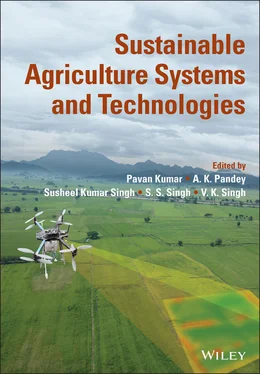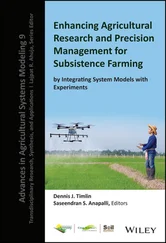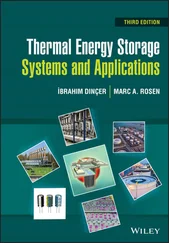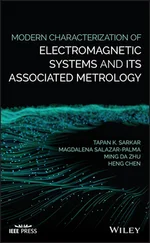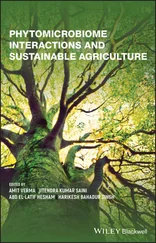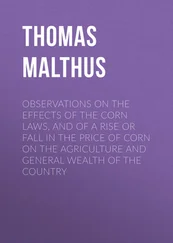Sustainable Agriculture Systems and Technologies
Здесь есть возможность читать онлайн «Sustainable Agriculture Systems and Technologies» — ознакомительный отрывок электронной книги совершенно бесплатно, а после прочтения отрывка купить полную версию. В некоторых случаях можно слушать аудио, скачать через торрент в формате fb2 и присутствует краткое содержание. Жанр: unrecognised, на английском языке. Описание произведения, (предисловие) а так же отзывы посетителей доступны на портале библиотеки ЛибКат.
- Название:Sustainable Agriculture Systems and Technologies
- Автор:
- Жанр:
- Год:неизвестен
- ISBN:нет данных
- Рейтинг книги:5 / 5. Голосов: 1
-
Избранное:Добавить в избранное
- Отзывы:
-
Ваша оценка:
- 100
- 1
- 2
- 3
- 4
- 5
Sustainable Agriculture Systems and Technologies: краткое содержание, описание и аннотация
Предлагаем к чтению аннотацию, описание, краткое содержание или предисловие (зависит от того, что написал сам автор книги «Sustainable Agriculture Systems and Technologies»). Если вы не нашли необходимую информацию о книге — напишите в комментариях, мы постараемся отыскать её.
A robust treatment of traditional and new techniques in sustainable agriculture Sustainable Agriculture Systems and Technologies,
Sustainable Agriculture Systems and Technologies
Sustainable Agriculture Systems and Technologies — читать онлайн ознакомительный отрывок
Ниже представлен текст книги, разбитый по страницам. Система сохранения места последней прочитанной страницы, позволяет с удобством читать онлайн бесплатно книгу «Sustainable Agriculture Systems and Technologies», без необходимости каждый раз заново искать на чём Вы остановились. Поставьте закладку, и сможете в любой момент перейти на страницу, на которой закончили чтение.
Интервал:
Закладка:
Table 3.4 Performance of crossbred lactating cows fed on homemade balanced concentrates mixtures.
| Ingredients | Concentrate mixtures | |||
|---|---|---|---|---|
| CM‐I | CM‐II | CM‐III | CM‐IV | |
| Initial body weight (kg) | 362.1 ± 4.08 | 367.4 ± 4.06 | 364.6 ± 3.11 | 366.7 ± 2.68 |
| Final body weight (kg) | 363.3 ± 4.17 | 368.1 ± 3.96 | 365.7 ± 3.33 | 368.6 ± 3.75 |
| Initial milk yield (kg/d/cow) | 7.24 ± 0.12 | 7.22 ± 0.11 | 7.30 ± 0.15 | 7.10 ± 0.09 |
| Final milk yield (kg/d/cow) | 7.42 ± 0.18 | 7.56 ± 0.10 | 7.76 ± 0.18 | 7.94 ± 0.14 |
| Fat content of milk (%) | 3.41 ± 0.02 | 3.46 ± 0.02 | 3.21 ± 0.06 | 3.44 ± 0.01 |
| Green fodder intake (kg/d/cow) | 3.93 ± 0.26 | 4.05 ± 0.99 | 3.96 ± 1.01 | 4.14 ± 0.92 |
| Dry fodder intake (kg/d/cow) | 3.54 ± 0.88 | 3.53 ± 0.90 | 3.98 ± 0.97 | 3.76 ± 0.99 |
| Concentrate intake (kg/d/cow) | 5.13 ± 0.11 | 4.60 ± 0.21 | 5.62 ± 0.45 | 6.67 ± 0.76 |
| Total DM intake (kg/d) | 12.60 ± 0.23 | 12.18 ± 0.47 | 13.56 ± 0.65 | 14.57 ± 0.81 |
| DMI (kg/100 kg body weight) | 3.46 ± 0.12 | 3.31 ± 0.09 | 3.71 ± 0.16 | 3.95 ± 0.21 |
| DCP intake (kg/100 kg body weight) | 0.272 ± 0.06 | 0.250 ± 0.05 | 0.297 ± 0.0.9 | 0.341 ± 0.11 |
| TDN intake (kg/100 kg body weight) | 2.002 ± 0.18 | 1.882 ± 0.11 | 2.143 ± 0.09 | 2.373 ± 0.14 |
| Cost of concentrate feed (Rs./t) | 6910 | 6930 | 6940 | 7280 |
| Cost of total feed (Rs./d) | 62.47 ± 0.62 | 65.11 ± 0.84 | 74.52 ± 0.58 | 82.36 ± 0.39 |
| Feed cost for milk production (Rs./kg of milk) | 9.15 ± 0.08 | 8.61 ± 0.12 | 9.60 ± 0.18 | 10.37 ± 0.11 |
Garg et al. (2009) reported that ration balancing improved milk production by 0.58 kg/animal/day with increment of 0.5% milk fat. After ration balancing, the improvement in milk production efficiency resulted in more milk from the same amount of feed. Milk production efficiency (kg fat corrected milk yield/kg DMI) of cows was 0.58 and 0.78 kg/kg, respectively for cows, before and after ration balancing. For buffaloes these values were 0.53 and 0.66 kg/kg. Balanced feeding can reduce the methane emissions from livestock farming, which is utilized for production purposes rather than maintenance, also known as the maintenance dilution effect (Garg et al. 2013). Vagamashi et al. (2016) observed improvement of daily milk yield by 0.95 l/day/animal and milk fat by 0.24% (3.98–4.22%) on feeding a balanced ration. This may be attributed to more efficient utilization of dietary energy and protein in lactating cow as reported by Garg and Bhanderi (2011). Findings are also similar to that of Haldar and Rai (2003), Bhanderi et al. (2016), and Mahanta (2017).
Total DMI per 100 kg body weight varied from 3.31 ± 0.09 kg to 3.95 ± 0.21 kg/d which did not differ significantly among the groups. DCP and TDN intake (kg/100 kg body weight) varied from 0.250 ± 0.05 to 0.341 ± 0.11 and 1.882 ± 0.11 to 2.373 ± 0.14 kg, respectively. The DCP and TDN intake did not differ significantly among the groups. Mahanta (2017) also reported DMI of 2.35–2.53 kg/100 kg body weight in crossbred lactating cows fed low cost balanced feed which was much lower than the present values. This may be attributed to the fibrous nature and bulkiness of the low cost feed which was responsible for low DMI. The DCP and TDN intake (g/kg W 0.75) of lactating crossbred cows were reported by Mahanta (2017) at 7.42–8.13 and 66.58–70.57, respectively. The higher DCP and TDN intake in the present study may be due to higher feed dry matter intake by crossbred cows than the values reported by Mahanta (2017). The cost of different concentrate feed varied from Rs. 6910 to 7280 per ton which was much lower than the market rate (Rs. 16 000/t) ( Table 3.4). Mahanta (2017) also prepared different low cost feed costing Rs. 8.58 and 8.28 per kg for lactating cows. In the present study, the cost of total feed offered to dairy animals in a day varied from Rs. 62.47 to 82.36. The cost of milk production was also estimated to be Rs. 8.61 to 10.37 per liter ( Figure 3.2). Vagamashi et al. (2016) reported an additional benefit of Rs. 38 per animal per day in cows fed on balanced ration, when milk production was increased by 0.95 l/day/animal and fat percentage by 0.24%. However, Mahanta (2017) reported the feed cost for milk production at Rs. 10.98–12.21 per kg of milk in crossbred cows fed low cost balanced feed, which are almost similar to the present study.
3.4 Conclusion and Future Prospects
TMR and homemade balanced feed are two important technologies for dairy sector in reducing the production cost as well as maintaining good health of animals. In most parts of the eastern region, undernutrition is a major constraint in animal production due to high cost of concentrate, lack of green fodder and quality dry fodder. Therefore, major share of ration is constituted by only crop residues and by‐products. As a result, full potential of production and reproduction of dairy animals is not exploited. Moreover, high cost of concentrate feed results in increase in input cost and thereby, nonprofitability of dairy farming. Feeding of homemade balanced concentrate together with TMR can solve the problem, particularly in smallholder milk production system. In recent years mobile‐based ration balancing programme is being implemented in many parts of India by NDDB. However, still it is not gaining up to the mark, particularly among resource poor farmers. Readymade availability of different types of homemade concentrate feed formulas may be acceptable by the smallholders. For wider dissemination, the formulas need to be handed over to the state government, KVKs and NGOs. Use of mass media and distribution of leaflets are also needed for creating general awareness among smallholders.
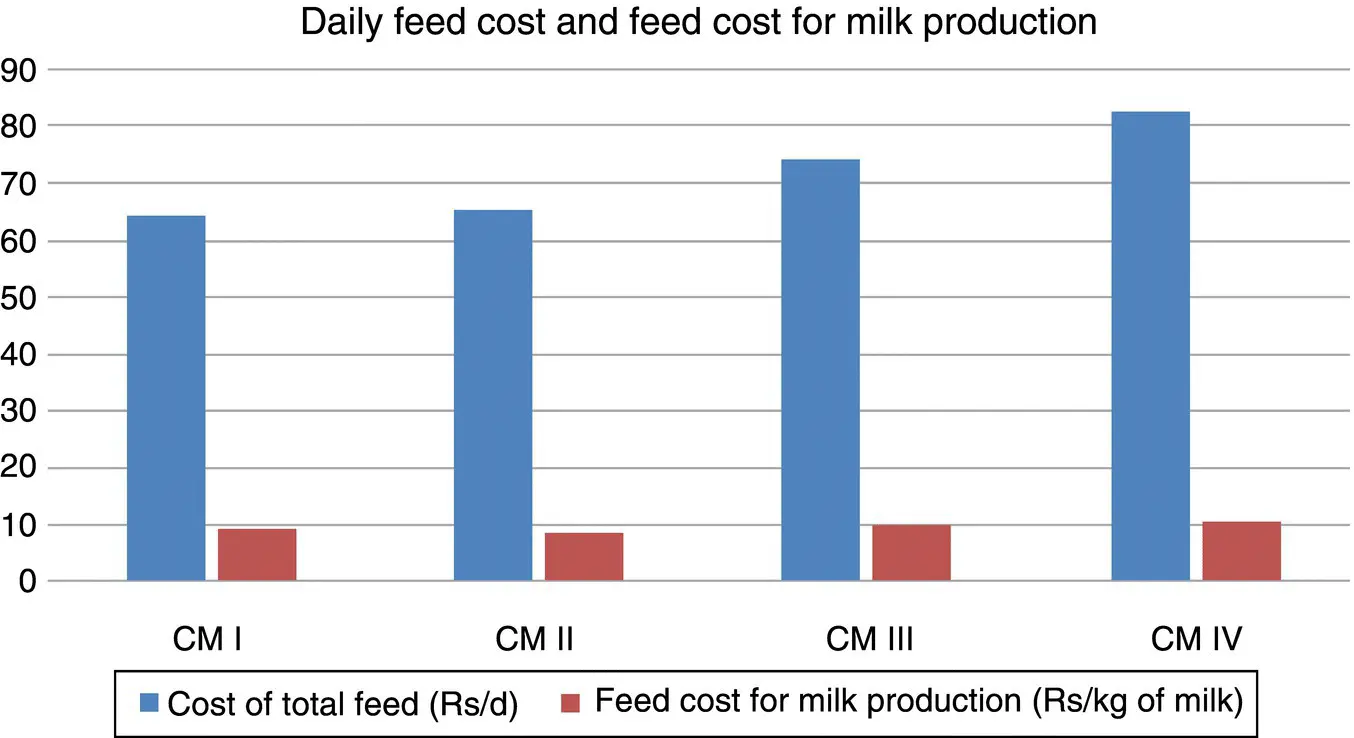
Figure 3.2 Daily feed cost and feed cost for milk production in cows fed different concentrate mixtures.
References
1 AOAC (2005). Official Methods of Analysis, Association of Official Analytical Chemists, 18e. Washington, DC: USDA.
2 Atturi, K.M., Singh, A., Chakravarthi Matha, K. et al. (2018). Effect of balanced ration supplementation on body weight gain and milk yield in different breeds of cattle. International Journal of Current Microbiology and Applied Sciences 7 (11): 2443–2446. https://doi.org/10.20546/ijcmas.2018.711.278.
3 Awlad Mohammad, M.E.M., Gorgulu, M., and Goncu, S. (2017). The effects of total mixed ration and separate feeding on lactational performance of dairy cows. Asian Research Journal of Agriculture 5 (2): 2456–561X.
4 Bae, O.H., Shin, C.N., and Ko, K.H. (1994). Effect of total mixed ration including apple pomace for lactating cows. Korean Journal of Dairy Science 16: 295–302.
5 Banerjee, G.C. (2000). Feeds and Principles of Animal Nutrition, 82–98. New Delhi: Oxford and IBH Publishing Co. Pvt. Ltd.
6 Bargo, F., Muller, L.D., Delahoy, J.E., and Cassidy, T.W. (2002). Performance of high producing dairy cows with three different feeding systems combining pasture and total mixed rations. Journal of Dairy Science 85 (11): 2948–2963.
Читать дальшеИнтервал:
Закладка:
Похожие книги на «Sustainable Agriculture Systems and Technologies»
Представляем Вашему вниманию похожие книги на «Sustainable Agriculture Systems and Technologies» списком для выбора. Мы отобрали схожую по названию и смыслу литературу в надежде предоставить читателям больше вариантов отыскать новые, интересные, ещё непрочитанные произведения.
Обсуждение, отзывы о книге «Sustainable Agriculture Systems and Technologies» и просто собственные мнения читателей. Оставьте ваши комментарии, напишите, что Вы думаете о произведении, его смысле или главных героях. Укажите что конкретно понравилось, а что нет, и почему Вы так считаете.
